From The Ragtime Ephemeralist to Rusty Brown
For some time now I have wanted to interview Chris Ware for The Syncopated Times. Over the years I have found myself frequently reaching for his three Ragtime Ephemeralist (TRE) digests of ragtime material as I research and read for enjoyment.
When I wrote him recently with a list of interview questions, he wrote that he was in the midst of a project but would get back to me as soon as it was finished, and indeed he did get back to me. His written answers to my questions follow.
Larry Melton: What is your musical background?
Chris Ware: Like many Midwestern youths of my general age and demographic, I took classical piano lessons but stopped sometime around age 13 or 14 when I realized it wasn’t going to help me meet girls. In the spirit of this pursuit, I later turned what shreds of what I’d learned on piano towards synthesizer and “prog rock,” but that proved even less effective towards my aim, not surprisingly. In between—appropriately, I guess—I got interested in ragtime.
If you play, do you perform?
Only for my cats. They almost always leave the room.
How did you discover ragtime?
Again, I was the perfect age to be soaked in the waterfalls of ragtime that cascaded from radios and record players in the early ’70s due to Joshua Rifkin’s recordings and, of course, the soundtrack to The Sting. When I look back on it, it seems like ragtime was everywhere; near unavoidable, even. And, like thousands of piano students, I’d tried to fumble my way through simplified versions of “The Entertainer” and the “Maple Leaf Rag,” but became frustrated by their lack of—something—and I taught myself to struggle through the original arrangements.
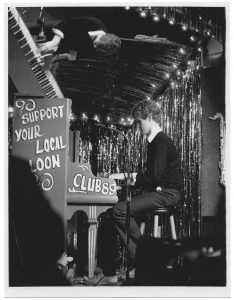
(photo courtesy Chris Ware)
Around this time, my mother started dating a very interesting and unusual fellow named Jeff Jordan, a former local newscaster and columnist for the newspaper for which they both worked; he’d grown up in Baltimore and was an aficionado of jazz, early comic strips, and ragtime, having befriended Bob Darch sometime in the late ’60s or early ’70s and always making it a point to see Darch when he was in town playing at a local Holiday Inn or some out-of-the-way club. It was through Jeff that I was introduced to Bob and what I would think of now as the “post war” version of ragtime (i.e. the straw skimmer/sleeve garter/peppermint shirt variety) and, being an impressionable youth, I was hooked. Bob started letting me play his breaks, and I’d somehow muster up enough early adolescent confidence to mount the stage and pound out the “Maple Leaf Rag” to the charitable light applause of an inebriated audience.
For as long as my mother was involved with Jeff Jordan, I would perform with Bob, and even traveled to a couple of out-of-town events with him. At one point he gave me one of his homemade bronze ragtime belt buckles, which he said he only gave to his serious protégés (in which group included Max Morath and Steve Spracklen). I was deeply flattered, and at that point resolved to make ragtime my life‘s vocation. The only problem was that I was a terrible pianist. Fortunately, my mother’s relationship with Jeff Jordan fizzled, which on one hand distressed me, but also saved me from becoming a failed ragtime pianist.
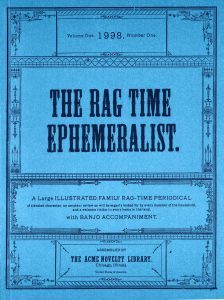
Bob and I lost touch, but we started corresponding again after I met him at the Savannah Ragtime Festival in 1995, with me sending him copies of the Ragtime Ephemeralist as I finished them and he sending me his characteristically chatty letters of reminiscence. He was a friendly person who was actually tremendously skilled; he could play the complicated ragtime literature and wasn’t just all show biz as he seemed on the surface. He also demonstrated what would be called now “social justice” inclination towards helping the then-forgotten African American composers of the music that he loved so much.
When I went to college at the University of Texas at Austin, I became very close friends with another cartoonist for the student newspaper there, John Keen, who also loved and played ragtime, and was and is a much more in accomplished pianist than I could ever hope to be. We took a number of trips driving around the Midwest trying to find surviving locales related to the history of ragtime, to say nothing of discussing, playing and I musing about the meaning and legacy of the music in an ever-paved-over America. He wrote the “New York Joplin Walking Tour” article in the third issue of the magazine.
Once I moved to Chicago, the city’s cultural historian Tim Samuelson and I became close friends, and aside from his interest in architecture and comic strips, he shares and enthusiasm and fascination for ragtime. He wrote the article about Scott Joplin’s time in Chicago for the second issue.
And I’m still a terrible pianist.
How did you gather so many acquaintances in the ragtime community and especially the luminaries you list as your Editorial Board and contributors in the publications?
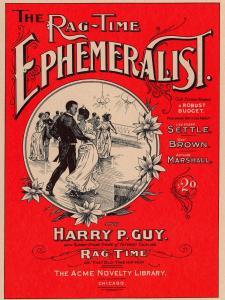
Honestly, I’m not sure. I mentioned the Savannah Ragtime Festival; that’s where I met Dennis Pash, Kevin Sanders and Bob Ault, who were at that time performing as the Et Cetera String Band. When I heard them for the first time, it was revelatory; I was just blown away. I thought “this is the perfect music and played exactly the way it was meant to be heard.” Dennis and I became friends and spent many multiple-hour long phone calls where he would tell me about discoveries he made regarding the music’s history, as well as his friend Galen Wilkes and all of Galen’s discoveries. It was through Dennis that I met a number of the 1990s performers of ragtime, including Craig Ventresco and Marty Eggers, who were performing in the group “Bo Grumpus”; Marty was either dating or by that time married to Virginia Tichenor, who introduced me to her father Trebor, whom of course I knew well from my scouring of all of his writings and research for, well, pretty much my whole life,
Before all of this, however, I met Reginald R. Robinson one day at the Chicago Public Library while fumbling through “Gladiolus Rag” in one of the piano practice rooms. I heard a knock on the window and here was this enthusiastic kid waving to me and jumping up and down. I invited him in, and he introduced himself and sat down and started playing—not Joplin or Scott or Lamb, but his own compositions. After a few minutes, I felt myself tear up, because even at that young age (Reginald I think was only 18) his compositions showed not only an intense love, passion and compassion for the music, but contained and recast that compassion, as well. We have been friends ever since.
Obviously, you and your contributors did a great deal of research for the illustrations and articles before the proliferation of searchable resource collections. I am especially interested in your material on the Maple Leaf Club card I donated to the Sedalia Collection. I was very grateful that you validated the card’s authenticity in TRE #3 as several had accused me of fabricating it. Your Sedalia research is quite thorough.
Well, that’s very kind of you to say. Who would accuse you of fabricating it?! Wouldn’t it make more remunerative sense to fabricate Abraham Lincoln’s calling card or George Washington’s stationery? Anyway, I found it interesting that the same printer’s dingbats used on that card were common in the local Sedalia newspaper’s advertising, indirect indicators to me that the images/blocks were on hand at the printer’s office, which apparently printed both.
How did you research the material for the TRE…Did you travel, use microfilm, etc.?
At that time, I spent a lot of time in libraries, looking at card catalogs and on microfilm of old newspapers—really, anything I could get my hands on. I wish I could say that “the thrill of the chase” kept me going, but honestly, I found it very frustrating and time-consuming to spend so much time simply trying to turn up a fact or two; then again, that pursuit sometimes led to accidental discoveries or side-reading that could chew up a whole afternoon. I remember once reading a run of Chicago Inter-Oceans and becoming so involved in the 1890s stormy weather reports that when I emerged outside, I was surprised it wasn’t raining.
Who provided the most help and encouragement to you as you collected and researched?
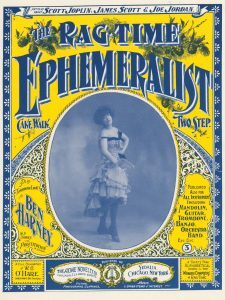
That would be very hard to say; again, I would consider Dennis Pash as my co-editor since he was so magnanimous with his knowledge and research and guidance, to say nothing of being a shrewd and unforgiving person when it came to getting facts straight. Nan Bostick, whom I miss very much, was also a warm and enthusiastic booster of any idea or notion, and Galen Wilkes always seemed ready with a brand new topic of research that no one had ever thought of, like Joseph Lamb’s minstrel compositions, or the biography of Edgar Settle that he spent so much time on for the second issue.
Rick Benjamin, of the Paragon Ragtime Orchestra, wrote me such an encouraging and inspiring letter after the appearance of my first issue he basically prodded me into doing a second, and contributed an article about the trombone’s role in ragtime performance and composition. He’s since become my closest ragtime friend; an amazing, tireless researcher whom it would be hard to imagine being more devoted to the preservation of the dignity of this music—to say nothing of the dignity of its composers—his tireless efforts at recording and his arrangement of Treemomisha are simply a life’s work of historical and research genius.
Finally, Ed Berlin became and remains such an enthusiastic booster of the publication sometimes I wondered if he was getting some sort of recompense from my mother simply to encourage me. To say I respect him profoundly would be an understatement, so the day that I received a complimentary email from him was an astonishing one. That he was able to scrape together a whole loaf of bread from the remaining table crumbs of detail into that masterful Joplin biography is still flabbergasting to me. The book is a model of scholarship and detective work, and Berlin is his own harshest critic, which I suppose is what makes him such an excellent researcher and writer.
Have you examined the Campbell collection at the Fisk?
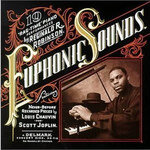
I did. Reginald Robinson and I drove there together in 1997 after he telephoned me one night saying that the famous photograph of Scott Joplin‘s piano (which Lottie Joplin had provided to Brun Campbell) seemed to also show sheet music which Reginald thought was almost legible. I piqued, enlarged the image on my computer and within one hour called him back and played the piece for him over the phone. It was a fairly amazing moment to know that we were the only two people alive who had ever heard this one surviving shred of Scott Joplin compositional genius.
About a week later, as I mentioned, he and I drove to Tennessee to visit Fisk and see the original photograph in person, which we pored over with a magnifying glass to check our errors. While there and on the trip back, Reginald and I made an informal agreement that he would be the first to record it and I would be the first to publish it, which is what led to the first issue of the Ephemeralist.
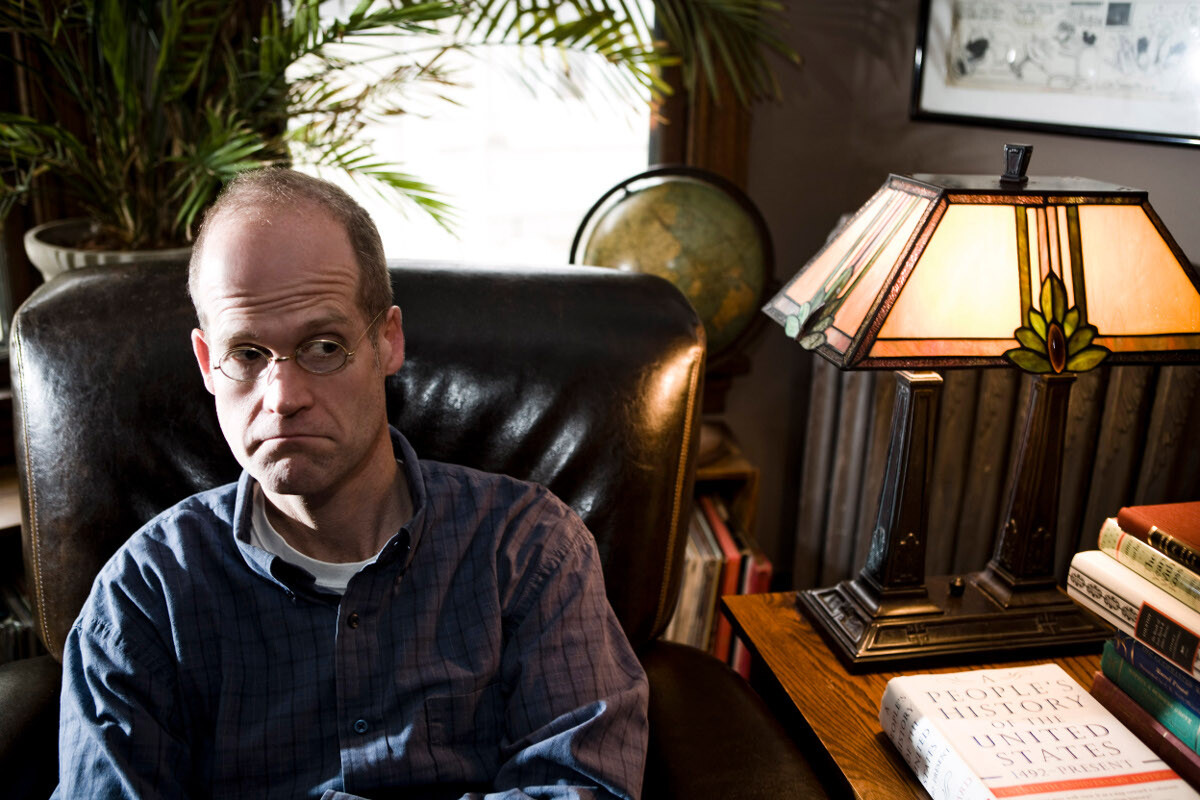
Did you amass your own ragtime collection of original ephemera?
I have; I suppose I should be investing in stocks or bonds, but instead I have spent most of my money on 78 records, cylinder recordings, sheet music, photographs, and manuscripts. I was the purchaser of that passel of material Rudi Blesh’s grandson offered at the Swann Gallery auction about five years ago. I’ve scanned it all with aims of it being the main portion of the fourth issue of the Ephemeralist (as well as to eventually donate it all to a distinguished institution like the Smithsonian or the Library of Congress) before I’m too old to remember what my name is. I also purchased a large collection of Fred Van Eps‘ personal papers, manuscripts, photographs, and surviving banjos from a kind and wonderful collector in Britain, Pat Doyle, who continues to this day to send me generous surprise packages of things revolving around the subject of the five string banjo which he thinks I might find interesting. Again, this will all be a part of the fourth issue, as well as being eventually donated en masse to a respectable institution.
Are you acquainted with Larry Karp’s “Brun Campbell” collection and book?
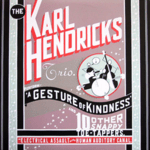
I am not, though I should be. When my daughter was born, I fell off the ragtime wagon and only recently have climbed back aboard and I need to catch up. Incidentally, this is why the third issue appeared more or less when she was born, and none have appeared since.
With which performers, researchers and/or collectors have you had the most association?
Aside from those I mentioned above, Richard Zimmerman and Tracy Doyle, who used to live in Illinois, were both very kind and generous when they lived here. Also, Arthur Labrew, who collaborated with Nan Bostick on her Detroit article, was helpful and magnanimous. I really miss Bob Ault, who died a few years back; some of my happiest memories of the “early aughts” (as Bob might have said) were when he was in town on the way to this or that Ragtime festival and he would stay with us and I would get to see him play both piano and banjo, which was always an inspiring and instructive experience, to say the least. I’ve been trying to play the classic/fingerstyle banjo ever since. (The cats leave the room then, too.)
Did David Reffkin interview you for his San Francisco radio program?
I think I’ve only been interviewed about ragtime history maybe a couple of times, once for the New York Times and again for an obscure antique collectors’ newsletter after I purchased the Rudi Blesh materials.
Were you ever featured in Leslie Johnson’s Mississippi Rag (the “grandmother” of The Syncopated Times)?
Not that I know of, but I used to buy copies of it at Tower Records in the 1990s; it seems amazing to me now that such a specific publication was available at a chain like that.
Have you followed the way TRE has appreciated in value at auction?
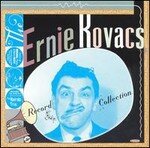
Not actively, but I anecdotally hear stories about how much copies occasionally go for. Mostly, I am heartened by the newest generation of players, from John Reed Torres to Jerron Paxton to Aaron Jonah Lewis, all of whom are bringing an ever-clarifying and ever-more respectful approach to this music which we all love. It’s funny, but it seems with every generation we all get a little bit closer to its core. Ironically, the generation of the 1950s seem to be furthest from that mark (the whole “thumbtack in the piano hammer” approach, which of course Bob Darch was a part of), but anyway. It’s clear it’s a very flexible and adaptable musical form.
Is there any possibility of TRE#4?
Yes, as is probably evident from my above answers. I have been planning a re-release of the first three issues as a “boxed set” with a sort of explanatory/apologia insert along with a new full-color fourth issue, which will include the Blesh material as well as articles on Van Eps and the unpublished tutor he was working on at the end of his life, along with photos and manuscripts of the British banjoist Joe Morley, to say nothing of the usual disorganized photos and, well, ephemera.
You were born in Nebraska and seem to have lived in the Chicago area for quite some time… Have you done further research on Chicago ragtime since TRE?
Not really, but Tim Samuelson led me and Rick Benjamin on a fascinating walking tour of parts of Chicago that related to ragtime, from Joe Jordan’s home to the site of the building he owned, the site of Arthur Marshall’s residence and of course the baseball diamond which now graces the site of the cottage where Scott Joplin briefly lived.
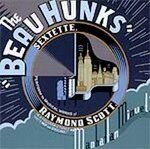
You have illustrated many album and CD covers in the past and they introduce the recordings so well by evoking the graphic styles of the music’s era. I note that your covers were done from 1994-2004. Before discussing your illustration and writing career I am interested in these 14 commissions. How did you begin illustrating these beautiful covers?
Well, thank you for your kind words. I think the first were for Guido Nielsen, the Dutch pianist whom I knew as a member of the Beau Hunks recording group who made their name re-recording the music of LeRoy Shield; when I met Guido, he told me he was embarking on a project to record the complete works of the “big three” composers of ragtime and asked if I would be willing to do the covers. I of course said yes, and tried to design them using a unifying graphic conceit, but one that I could adjust to sort of synaestheically approximate the tone and feeling of each composer’s work; i.e. the cover for Lamb is much more romantic and lyrical than James Scott’s, which is more electric and bright. Whether this idea worked or not, I have no idea. From there I did a few other covers, including two for my friend Rick Benjamin’s Paragon Ragtime Orchestra, the last being his book-and-record set for his arrangement of Treemonisha. The book itself is full of fascinating and compelling new information about Joplin and the opera, to say nothing of the recording. with which I was extremely proud to be affiliated.
Did you have any special connection to the recording artists?
I think I probably already answered this question in my above blather; I have tremendous respect for so many of these artists, though I haven’t yet highlighted Craig Ventresco, who is a fantastic, genius guitarist who seems to be able to instantly play anything he hears, to say nothing of playing it with a respect and powerful drive that perfectly captures the complicated yet blunt poetry of it all.
Have you illustrated albums other than the ones listed on the “Album Art of Chris Ware” website?
Possibly, but I haven’t looked at the website, and I would probably find it painful to do so.
You are an internationally recognized master of illustration and a pioneer in the graphic novel genre. Many know your work from your New Yorker covers and illustrations. What led to your art illustration career?
Well, this is probably a question too complex to answer here, and something I have rambled on about at length too much already, but the long and short of it is that I am not an illustrator but a writer who writes in pictures; I try to use the uncertainty and slow coalescence of drawing as a means towards narrative composition that somehow mirrors the way we think about and remember the world. In other words, I don’t just sit down and write a script and then spend five years drawing it, I let the pictures write the story. If that makes any sense.
I understand you have a graphic novel nearly ready for distribution…Please describe your latest graphic novel project.
Yes, it’s called “Rusty Brown,” and is the first part of a lengthy, probably lifelong effort on my part to try to capture in images something of the way memory works, though I suppose it’s more appropriate here for me to say that one of the chapters deals with a schoolteacher who learns to play the banjo in the style now known as “classic banjo,” which was common at the turn of the century, and which was the style Vess Ossman and Fred Van Eps played. Can’t get much more obscure than that, I guess.
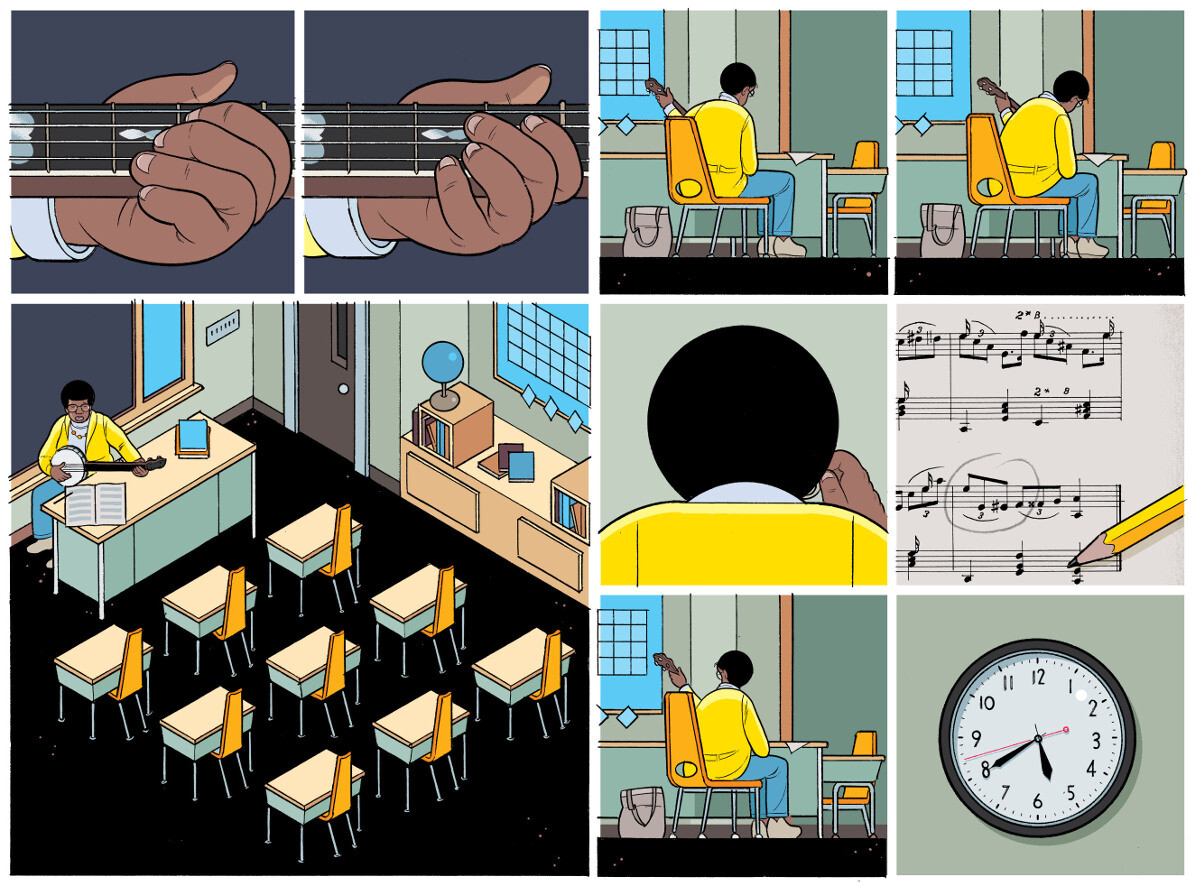
(image courtesy Chris Ware and Pantheon Graphic Library)
Other that your album art, have your ragtime interests morphed into your writing and illustration career in any other ways?
Maybe it sounds crazy, but I see a genuine connection between comics and ragtime in that both are a compositional art; ragtime is really the last American popular musical art which is not reliant on expressionistic performance, i.e. one could play a composition by Scott Joplin on the xylophone, the harpsichord, or on tuned hubcaps and it would still somehow be emotionally moving. Emotion, as in Bach’s music, is encoded into the music, not dependent on its performance. Of course, the performance can eloquently highlight, balance, or submerge the emotion, but it’s always there. Comics are a very similar medium, based entirely on the compositional skills of the writer/artist; the reader “plays” comics in his or her mind like sheet music, if that doesn’t sound too insane.
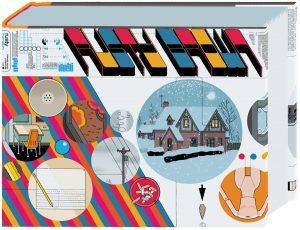
Finally, I see ragtime as a sort of gift from the African-American composers who initially codified it at the end of an especially hopeful time (post-Civil War) of their possibility of being treated equally and equitably—but which, as we all now, did not happen, and still has not. As an unstable molecule of European and African musical atoms, it was born organically out of one of the greatest crimes of humanity but offered up as a level field of art and, in some cases, as a collaboration between social and cultural groups undeniably and understandably wary of each other. As such, I think it should be treated with the greatest of respect, delicacy and dignity.
Chris Ware’s Rusty Brown, recently published by Pantheon Graphic Library.
Larry Melton was a founder of the Scott Joplin Ragtime Festival in 1974 and the Sedalia Ragtime Archive in 1976. He was a Sedalia Chamber of Commerce manager before moving on to Union, Missouri where he is currently helping to conserve the Ragtime collection of the Sedalia Heritage Foundation. Write him at lcmelton67@gmail.com.






















